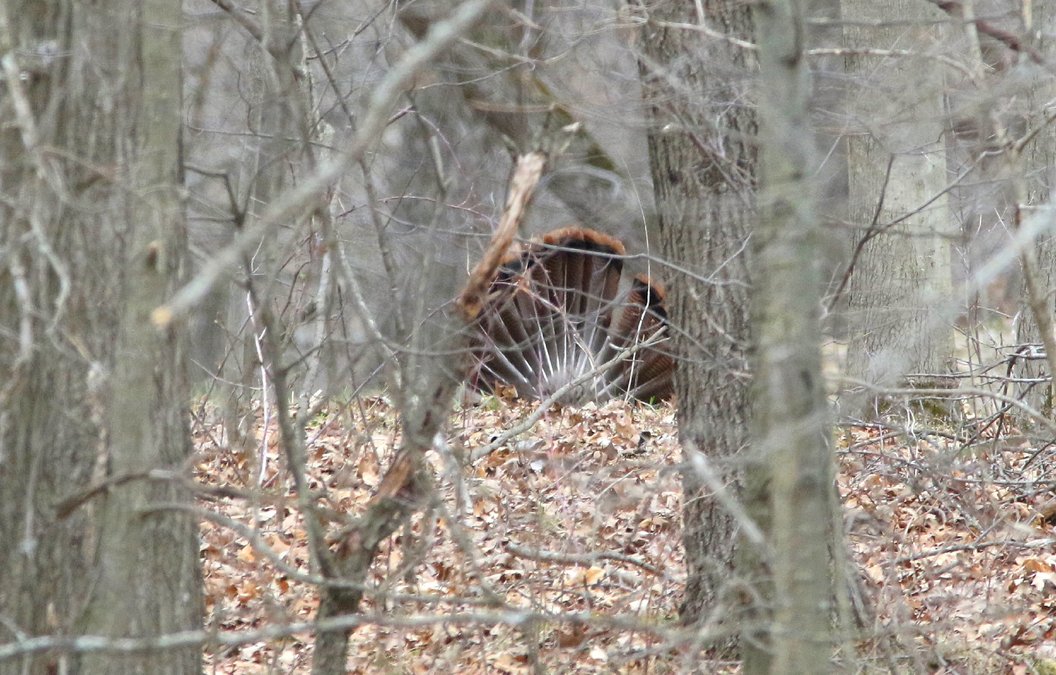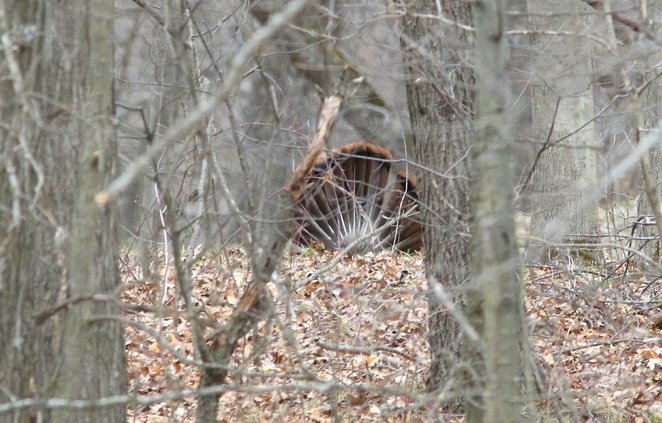Wild turkey gobblers are on the minds of birders who call the birds to talk turkey with them. And to photographers who want a debris-free image of a gobbling gobbler, or hunters wanting a safe, effective shot.
Novices in these categories rank having the greatest need, not that the others can’t reconsider their choices made years ago if those choices have not satisfaction producing.
A birder, with seven basic call choices, should lean toward a push-pin call or a slate pot call, using a fine striker peg to scratch the surface and make a sound likeable to tom or jake turkeys.
The hunter wants all of that usually; however more and more hunters are pushed toward being a birder or a photographer when hunting the first day or two of the seven-day period.
After donning full camouflage in any any pattern, hands and face, too, what’s the choice for a call, camera and gun?
The smart answer could be whatever works best for the person, but as a starter, what is easiest to operate so the user doesn’t become frustrated with a big boat paddle call, which is usually used for long distance turkey talk.
“By the time someone has been hunting for a few years they’ll have all the calls including a diaphragm mouth call and maybe a wing bone call, too,” said Doug Williams, at D W Sports Center in Portage, Wisconsin.
The young hunter may initially be concerned with recoil and stick with a light weight 20 gauge shotgun. Don’t overlook the .410 turkey special but the ammunition is out of this world at about $8 a cartridge. It should only take one expensive cartridge and a handful of rabbit loads as practice.
“This shotgun was built for turkey hunting and killing at 40-52 yards,” said Don Martin at Martin’s in Monroe, Wisconsin. “Regular chokes make this gun a good rabbit, pheasant and woodcock gun, too, with the considerably less expensive ammunition.”
The photographer needs the best they have money to purchase, but one of the top brands with a variable lens going to 400 mm is good enough to start and maybe the only lens they ever buy. Some of the best turkey images are close-ups, taken from a few feet away leaning against a tree.
Photography is surely a field to grow into and equipment will be dictated by the uses of the images. Don’t disregard today’s phones, either, with attachments for more distant shots.
Also for first timers, borrowing items is a great start, as well as having a mentor.
If weather is not the greatest, take it from Jeff Fredrick, of Mindoro, Wisconsin and one of Wisconsin’s best caller, hunter, artist, and supporter: “If the weather is not the best to enjoy a fine spring day, delay, delay, delay.” Fredrick wants to be able to smell the freshly turned soil, hear the streams flowing, and other wildlife singing or calling. A bad weather day may turn a turkey trier into a turkey denier.
Think ahead while waiting for tom turkey to make up his mind.
Elk burgling in Clam Lake and Black River Falls, Wisconsin are doing just that in early September. If seeing a gang of cows, bulls and calves pushes enough enthusiasm to donate a few bucks, apply for one of a tiny number of hunting permits, with $7 of the $10 fee going toward Wisconsin’s elk management and enhancing elk habitat, which benefits other wildlife, too. Chances of getting a permit aren’t much better than winning a lottery, but someone will.
Applications to hunt in Black River Falls area or Calm Lake area are due May 31, 2024.
If there is smoke, there may be a prescribed burn being conducted on federal, state, or private land. This is something worth watching and in some cases helping, if interested.
These burns benefit many plant communities in Wisconsin including prairies, wetlands, oak/pine barrens and oak savannas, all of which have adapted over thousands of years to fire and are not likely to exist in an ideal state without fire.
Many wildlife are reproducing during spring and in almost all cases finding a baby wild animal is best left to itself. Instead of assuming it was left, assume the reverse.
The recent solar eclipse may have caused many of us to look more closely at nature. Events such as seeing a beaver cross a road around noon, having a pair of wood ducks take to land rather than flush from a stream, and see millions of tiny red cedar pollen cones pulse-release gazillions of air-borne pollen grains may not have been connected to the sun and moon getting in one another’s way.
Then again, maybe they were?
Contact Jerry Davis, a freelance writer, at sivadjam@mhtc.net or
608.924.1112.





